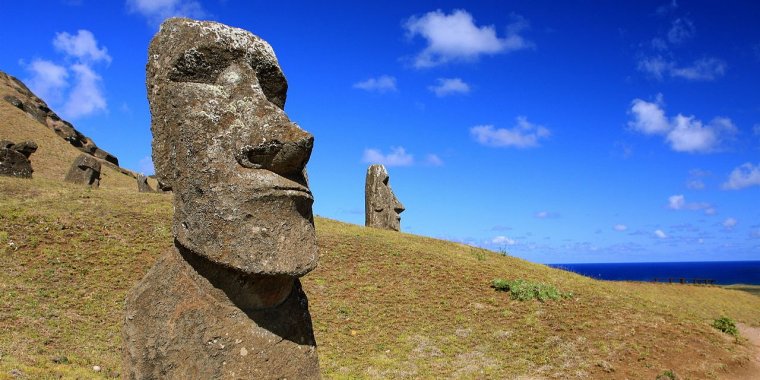| News / Science News |
Scientists report correlation between locations of Easter Island statues and water resources
A new study employed quantitative spatial analysis to establish that the platforms, or ahu, built to support the Easter Island statues, or moai, are usually located near sources of drinkable water. This feeds into the scholarly discussion of whether the purpose of the statues was exclusively ritualistic, practical or some combination of these.

Moai at Rano Raraku - Easter Island. ![]()
The study examined 93 statues on the western side of the island, all of which were built before contact with Europeans. They compared the sites of the statues to sites associated with the specific resources: the kind of rock the statues are made of, the kind of rock used for tools, fishing, vegetable and potato cultivation, and water sources.
The archaeologists say that this study is the first attempt to formally examine the idea that the locations of the moai are correlated to locations of resources important to the people who built them, such as fresh water.
Easter Island does not have streams that run nonstop but it does have an aquifer that produces freshwater seeps of brackish but drinkable water during low tide. Most of these water harvesting sites are along the coast but a few are inland—and so are the ahu.
What is important about it is that it demonstrates the statue locations themselves are not a weird ritual place – [the ahu and moai] represent ritual in a sense of there is symbolic meaning to them, but they are integrated into the lives of the community," said study co-author Professor Carl Lipo of Binghamton University.
He went on to add "The exceptions to the rule about being at the coast where water comes out actually are met by the fact there is also water there – it is found through cave locations," referring to caves with fresh water, and that some historical evidence suggests there may have been wells dug near the ahu that are not near caves.
Jo Anne Val Tilburg of the University of California, Los Angeles disagreed with these findings: "The existence of fresh water seeps near coastal ahu is well-known and was certainly important at European contact. However, such seeps are today, and probably always were, minor resources. It is highly unlikely, in my view, that these resources were of major importance in locating ahu during prehistory." (Wikinews)
YOU MAY ALSO LIKE





